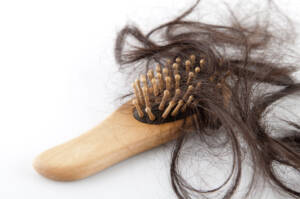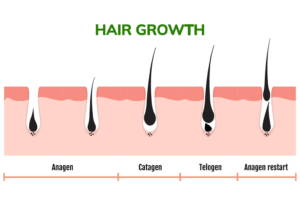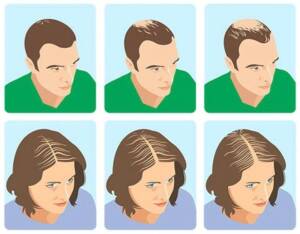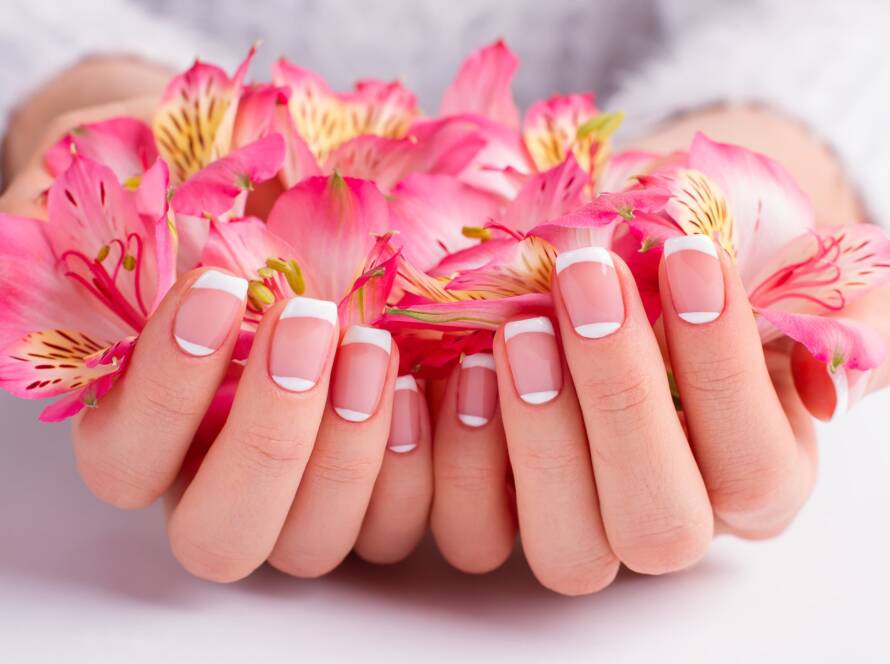Understanding and Managing Hair Loss

Healthy hair is an important complement of our physical well-being and synonymous with good looks, charm and beauty. Our hair, like our health, is something we take for granted-until we start losing it If hair start to diminish, it can be devastating to the person’s identity and self-esteem resulting in depression and anxiety.
A number of internal and external factors can affect your hair health and growth, including heredity, age, hormonal changes, diet, sun exposure, illness, medication, the products and hair tools used, heat styling, stress etc.
Hair loss is more prevalent in older adults, but anyone can experience it, including children. It is typical to lose between 50 and 100 hairs a day from normal shedding, as part of the normal hair growth cycle. With about 100,000 hairs on your head, that small loss isn’t noticeable.
Hair Growth Cycle
A hair growth cycle consists of three phases. The first phase is the anagen or active phase, when hair grows actively. This phase may last for 2-7 years. The next stage is catagen or transitional phase, when hair stops growing and separates from its follicle. The catagen phase lasts about 2-3 weeks. The last phase is telogen/ resting phase, Telogen is the third phase which lasts for 2-3 months. In this stage, the hair stays in the scalp without growing and can be removed by pulling and combing the hair. Also, during this phase the hair can stay till the new hair grows and pulls the old hair to fall spontaneously. The next anagen phase begins as a new hair grows in the same follicle.

New hair normally replaces the lost hair, but this doesn’t always happen. If the hair growth cycle is disrupted, or if a hair follicle is damaged, hair may begin to fall out more quickly than it is regenerated, leading to symptoms such as a receding hairline, hair falling out in patches, or overall thinning. Hair loss may develop gradually over years or happen abruptly. Depending on the underlying cause, it may be temporary or permanent.
Types of hair loss with different underlying cause:
- The chances of experiencing hair loss increases with More hair follicles go into the resting phase, and the remaining hair become shorter and fewer in number.
- Hair loss could be due to heredity and can affect both men and women If you have a family member who suffers from hair loss, you are likely to have it as well. In men, this condition is called male pattern hair loss. It is characterized by a receding hairline and gradual disappearance of hair from the crown and frontal scalp. It starts above the temples and continues around the perimeter and the top of the head, often leaving a ring of hair along the bottom of the scalp. In women it is called female pattern hair loss. In women, hair slowly thins all over the scalp, but the hairline usually doesn’t recede. Many women experience this type of hair loss as a natural part of aging or during menopause.

Male and Female Patterned Hair loss
- Sometimes there is sudden hair loss in a previously normal scalp. It occurs because of changes in the growth cycle of hair. A precipitating event, such as a severe illness, surgery or severe sudden emotional stress, result in a high amount of hair entering the telogen phase all at the same time. As a result, excessive shedding can occur. It can also happen due to hormonal changes during pregnancy, childbirth, menopause. Other causes include thyroid imbalance or abnormal levels of male hormones, starting or stopping birth control pills and medications for heart conditions, blood pressure, birth control, acne and depression. The hair returns when the underlying condition is treated.
- Other causes of hair loss include: deficiency of niacin, vitamin D, iron, zinc and biotin, restrictive diets, rapid weight loss, certain hair care practices, such as wearing hair in very tight braids, corn rows or ponytails. Because of such hairstyles, the hair follicles undergo a lot of stress, which ultimately leads to damage and hair loss.
- Over-supplementing vitamin A, E and seleniume., exceeding the recommended daily limit can lead to their toxicity and hair loss.
Treatment
Treatment for hair loss depends on the cause.
- Treatment / control of the underlying medical cause, if any. Once the potential cause is identified and treated, regrowth should occur within 6 months.
- When hair loss is related to a medication, stopping the drug usually prevents further hair loss, and the hair will eventually grow back.
- For male-pattern and female-pattern hair loss, dermatologist can suggest certain topical medicines that stimulates new hair growth and improves thickness and density.
- Resolve nutritional deficiencies, if any. Eat a balanced diet rich in proteins, vitamins, minerals and antioxidants to promote hair growth and strengthen hair roots. Biotin rich foods like egg yolk, dairy products, whole grains, fish, peanut, almond, walnut, soybean, mushroom, sunflower seeds, banana, sweet potatoes, avocado, broccoli, cauliflower may be beneficial. Supplementing the diet with vitamin D rich foods like egg yolks, mushroom, tofu, cheese, milk, curd, soymilk, salmon, sardines, canned light tuna, herring, mackerel can improve symptoms. In case of low iron levels, supplementation is recommended along with appropriate vitamin C intake.
Nutrients for Healthy Hair Growth
Nutrition contributes significantly to hair growth and hair health. Apart from the protein, regular intake of foods rich in below mentioned nutrients facilitate healthy hair growth.
| Nutrient | Effect on Hair Growth | Food sources |
| Zinc | Useful in patchy surface hair loss | Red meats, shellfish, quinoa, legumes, beans, oats, mushroom, asparagus, spinach, pumpkin seeds, sesame seeds, flax seeds, sunflower seeds, chia seeds, alfa-alfa sprouts, peanut, cashew, almonds. |
| Iron | Carries oxygenated blood to the hair follicles | Red meat, poultry, fish, egg, pulses, soya beans, tofu, spinach, quinoa, nuts and pumpkin seeds. |
| Selenium | Needed for a healthy scalp | Fish, chicken, eggs, organ meat, whole grains, lentils, chickpeas, kidney beans, cashews, almonds, sunflower seeds, milk, yogurt, cottage cheese. |
| Silica | Development of strong hair | Green beans, banana, spinach, brown rice, oats lentils, tofu, seafood. |
| Copper | Production of antioxidant superoxide dismutase needed for healthy hair | Seafood, nuts, whole grains, seeds and legumes, and organ meats. |
| Potassium | Moisture and pH maintenance | Bananas, oranges, melon, apricots, prunes, raisins, and dates, spinach, broccoli, potatoes, sweet potatoes, mushrooms, peas, cucumbers, zucchini, pumpkins, leafy greens. |
| Magnesium | Strengthens hair and facilitate faster growth | Whole wheat flour, quinoa, brown rice, spinach, broccoli, white chana, whole moong, peanut, pumpkin seeds, sunflower seeds, chia seeds, flax seeds, almonds, cashew nut, prunes. |
| Calcium | Fast hair growth | Milk and milk products, methi leaves, spinach, ragi, bengal gram (whole), rajmah, soybean, chia seeds, almonds, dry coconut, sunflower seeds, poppy seed, sesame seeds, moringa leaves. |
| Vitamin A | Prevents free radicals and inflammation on follicles | Carrot, mango, papaya, sweet potato, yellow capsicum, pineapple, pumpkin, corn, spinach, broccoli, melon apricot, lettuce. |
| Vitamin B | Improves shininess and helps grow thick hair | Dark leafy greens, gluten-free whole grains, sweet potatoes, legumes, fish, eggs. |
| Vitamin C | Facilitates faster growth of strong hair | Orange, mausmi, Strawberries, blueberries, kiwis, papaya and potatoes, broccoli, kiwi, amla, guava, and sweet potatoes. |
Tips to prevent hair damage that may cause hair loss
Although you can’t reverse natural hair loss, you can protect hair from damage that may eventually lead to thinning by following these guidelines:
- Be natural: Leave your hair in its natural colour and texture. In case you opt for chemical treatment, give your hair time to recover in between treatments. Don’t style your hair with tight braids.
- Choose products wisely: Use a basic shampoo designed for your hair type. When curling your hair, choose less-damaging sponge rollers. Also, brush using a moderately stiff, natural-bristle brush, which is less likely to tear your hair. Avoid harsh treatments such as hot rollers, and curling iron.
- Brush properly: Using a proper brush, apply full strokes from the scalp to the tips of your hair to distribute the hair’s natural oil. Be gentle, and avoid brushing your hair when wet, when it is especially fragile. It is best to use a wide-toothed comb on wet hair.


